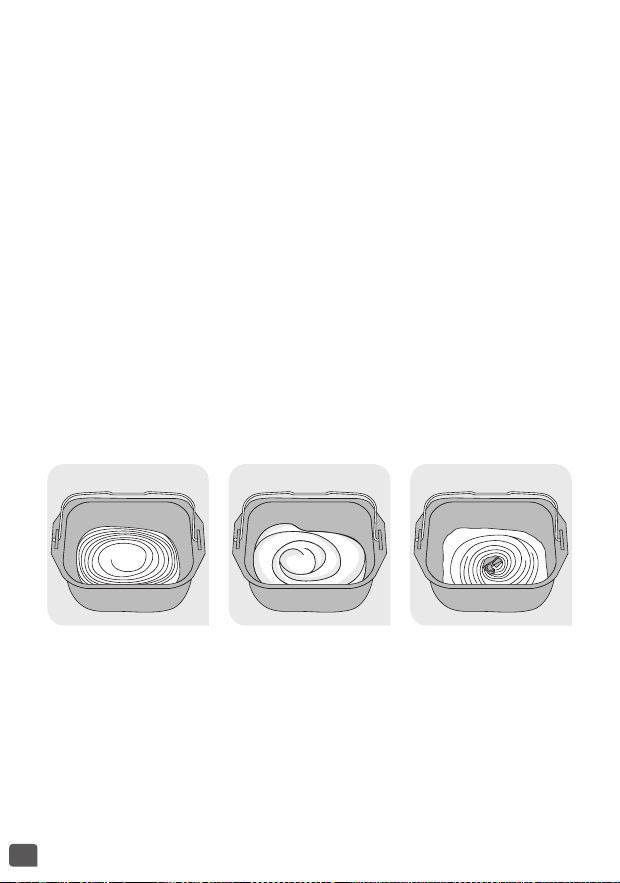Loading ...
Loading ...
Loading ...

150
intolerance to the gluten (celiac disease sufferers) present in several
cereals (wheat, barley, rye, oat, kamut, spelt, etc.).
It is important to avoid cross-contamination with flours containing
gluten. Exercise special care cleaning the pan and the kneading paddle,
as well as all utensils being used to make gluten-free breads and cakes.
You must also ensure that the yeast used contains no gluten.
Gluten-free recipes have been developed based on the use of
preparations (also called ready-to-use mixes) for gluten-free bread
that are either Schär or Valpiform type.
• Blends of flour types must be sifted with the yeast to prevent lumps.
• When the program is launched, it is necessary to assist the kneading
process: scrape down any unmixed ingredients on the sides towards the
centre of the pan using a non-metallic spatula.
• Gluten-free bread cannot rise as much as a traditional bread. It will be
of a denser consistency and lighter colour than normal bread.
• All premix brands do not yield the same results: the recipes may have
to be adjusted. It is therefore recommended to conduct some tests (see
example below).
Example: adjust the quantity of liquid.
Exception: cake batter must remain quite liquid.
Too liquid OK Too dry
Loading ...
Loading ...
Loading ...